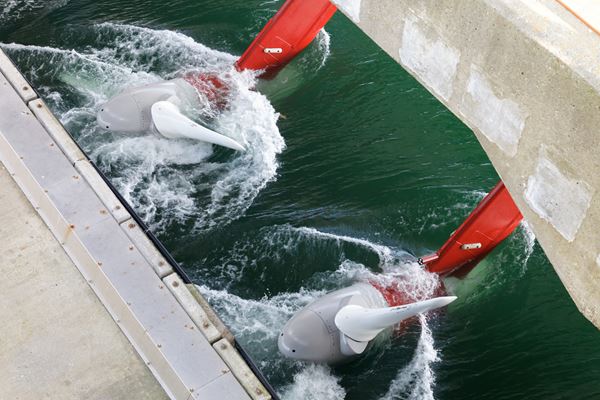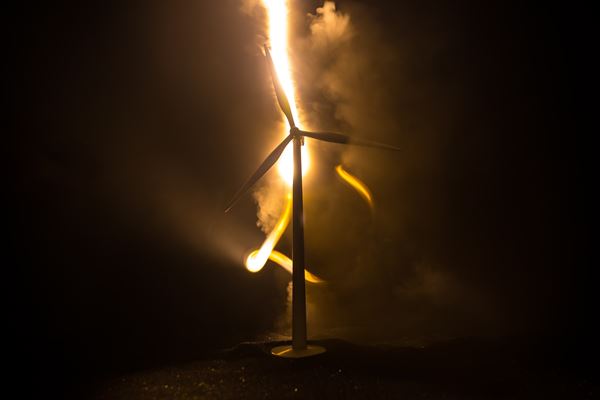Maximizing Solar Power Efficiency: Understanding and Addressing Solar Panel Losses

As the renewable energy sector continues to gain momentum, solar power generation is taking center stage. However, to effectively navigate solar PV power generation failures, a deep understanding of technical aspects, such as system components, essential terminologies, and the costs associated with failure remediation, is critical.
Solar PV power systems encompass a multitude of components that convert sunlight into electricity. Inverters, the linchpin of this system, are the critical component that converts the photoelectric generated DC power from the solar PV modules to AC power, thereby facilitating connection to the utility grid. Central inverters, typically larger inverters for ground-mounted utility-scale solar power generation systems, are typically connected to thousands of solar PV modules. Conversely, string inverters are smaller and more compact, designed to convert DC power from hundreds of solar PV modules to AC power.
This article delves into the complexities of solar power generation, elucidating the fundamentals of solar power generation and electrical terminologies essential for comprehension.
Basics of Solar Power Generation and Electrical Terminology
Solar power generation primarily comes in two forms: solar photovoltaic (PV) and concentrated solar power. Solar PV harnesses the photoelectric effect through silicon cells, while concentrated solar power uses heat for electricity generation. Solar PV is the more common of the two, found in both commercial and utility-scale sizes. The increase in solar PV installations is largely due to improved economics around solar modules including the increased module capacity and size, allowing for more cells and thus, more power output. Solar PV is one of the most cost-effective forms of all power generation.
Understanding the terminology used in power generation is crucial. For instance, voltage is the potential of a component in an electrical circuit, while current is the flow of electricity through a conductor. Power, measured in watts, is the product of voltage and current. Electricity is measured in watt-hours, which is the product of power and time. Understanding these concepts enables businesses to effectively manage consumption and gauge generator efficiency.
Essential Components of Solar Power Systems
Solar power systems consist of several components, including solar modules, combiner boxes, inverters, racking systems and transformers. Solar PV modules house the individual cells that generate DC electricity. Inverters convert the direct current (DC) produced by the solar modules into alternating current (AC) that can be connected to the utility’s grid. Other components include combiner boxes, bringing together the output from multiple strings of solar modules, and transformers, which step up the voltage for transmission to the grid.
Solar Installation Failure Modes and Remediation Costs
Failure modes in solar installations encompass a spectrum of issues. Fires, for instance, can originate at connection points due to high resistance connections, water intrusion, or incorrect connector selection. Lightning strikes, both direct and indirect, can cause significant damage, resulting in surges, high temperatures, and scorching of components. Hail and wind can cause physical damage to the modules, leading to cracked glass or cell damage. Lastly, issues with the foundations of the solar installation can lead to module damage or system failure.
Remediation considerations are equally complex. Estimating lost power production involves multiple variables, including the total capacity of the system, the number of hours in a year, and the solar capacity factor. When it comes to repair versus replacement, there are limited repair options for solar PV modules, with most damage necessitating replacement. Inverters and transformers, on the other hand, can often be repaired.
The cost of these remediation efforts can vary, depending on the size and scale of the project and the specific components involved. The Inflation Reduction Act has provided significant incentives for the use of renewable energy in the United States, leading to an increase in solar PV power generation deployment.
Conclusion
Navigating the renewable energy landscape, particularly solar PV power generation, presents a complex landscape. For businesses to effectively navigate, a comprehensive understanding of solar panel losses and the technicalities of solar power generation is vital. With solar PV power generation gaining momentum, comprehensive awareness of system design intricacies, failure modes, and remediation considerations is key to managing failures in solar PV power generation systems. By being informed and proactive, businesses can confidently and expertly maneuver in the renewable energy space.
Nuestros consultores están listos para ayudar.



